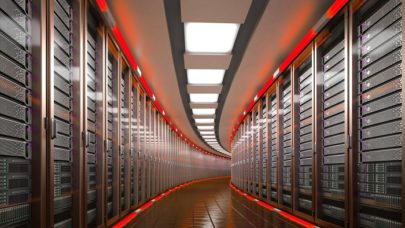
pNFS Provides Performance and New Possibilities
February 29, 2024
At the cusp of a new era in technology, enterprise IT stands on the brink of the most profound transformation since the Internet's inception. This seismic shift Read more…

Object Storage a ‘Total Cop Out,’ Hammerspace CEO Says. ‘You All Got Duped’
November 2, 2023
The mass adoption of object storage systems like Amazon S3 may appear to be a top achievement of the big data era, since we got essentially unlimited storage ac Read more…

Scientific Computing Options Maturing in the Cloud
August 31, 2023
Supercomputing remains largely an on-premises affair for many reasons that include horsepower, security, and system management. Companies need more time to move Read more…

SC20 Panel – OK, You Hate Storage Tiering. What’s Next Then?
November 25, 2020
Tiering in HPC storage has a bad rep. No one likes it. It complicates things and slows I/O. At least one storage technology newcomer – VAST Data – advocates dumping the whole idea. One large-scale user, NERSC storage architect Glenn Lockwood sort of agrees. The challenge, of course, is that tiering... Read more…

AWS Debuts Lustre as a Service, Accelerates Data Transfer
November 28, 2018
From the Amazon re:Invent main stage in Las Vegas today, Amazon Web Services CEO Andy Jassy introduced Amazon FSx for Lustre, citing a growing body of applicati Read more…

DDN, Nvidia Blueprint Unified AI Appliance with Up to 9 DGX-1s
October 4, 2018
Continuing the roll-out of the A3I (Accelerated, Any-Scale AI) storage strategy kicked off in June, DDN today announced a new set of solutions that combine the Read more…

Fostering Lustre Advancement Through Development and Contributions
January 17, 2018
Six months after organizational changes at Intel's High Performance Data (HPDD) division, most in the Lustre community have shed any initial apprehension aroun Read more…

Lustre Enhances Flexibility for Big Data Era
September 13, 2017
Researchers at Oak Ridge National Laboratory (ORNL) and Intel Corporation have wrapped up a three year project aimed at giving users of Lustre, the Department o Read more…

- Click Here for More Headlines

Whitepaper
Transforming Industrial and Automotive Manufacturing
In this era, expansion in digital infrastructure capacity is inevitable. Parallel to this, climate change consciousness is also rising, making sustainability a mandatory part of the organization’s functioning. As computing workloads such as AI and HPC continue to surge, so does the energy consumption, posing environmental woes. IT departments within organizations have a crucial role in combating this challenge. They can significantly drive sustainable practices by influencing newer technologies and process adoption that aid in mitigating the effects of climate change.
While buying more sustainable IT solutions is an option, partnering with IT solutions providers, such and Lenovo and Intel, who are committed to sustainability and aiding customers in executing sustainability strategies is likely to be more impactful.
Learn how Lenovo and Intel, through their partnership, are strongly positioned to address this need with their innovations driving energy efficiency and environmental stewardship.
Download Now
Sponsored by Lenovo
Whitepaper
How Direct Liquid Cooling Improves Data Center Energy Efficiency
Data centers are experiencing increasing power consumption, space constraints and cooling demands due to the unprecedented computing power required by today’s chips and servers. HVAC cooling systems consume approximately 40% of a data center’s electricity. These systems traditionally use air conditioning, air handling and fans to cool the data center facility and IT equipment, ultimately resulting in high energy consumption and high carbon emissions. Data centers are moving to direct liquid cooled (DLC) systems to improve cooling efficiency thus lowering their PUE, operating expenses (OPEX) and carbon footprint.
This paper describes how CoolIT Systems (CoolIT) meets the need for improved energy efficiency in data centers and includes case studies that show how CoolIT’s DLC solutions improve energy efficiency, increase rack density, lower OPEX, and enable sustainability programs. CoolIT is the global market and innovation leader in scalable DLC solutions for the world’s most demanding computing environments. CoolIT’s end-to-end solutions meet the rising demand in cooling and the rising demand for energy efficiency.
Download Now
Sponsored by CoolIT
Advanced Scale Career Development & Workforce Enhancement Center
Featured Advanced Scale Jobs:
HPCwire Resource Library
HPCwire Product Showcase
© 2024 HPCwire. All Rights Reserved. A Tabor Communications Publication
HPCwire is a registered trademark of Tabor Communications, Inc. Use of this site is governed by our Terms of Use and Privacy Policy.
Reproduction in whole or in part in any form or medium without express written permission of Tabor Communications, Inc. is prohibited.
























